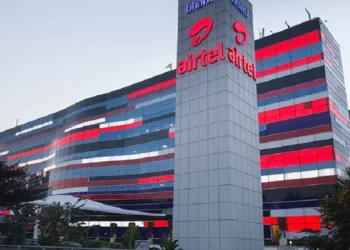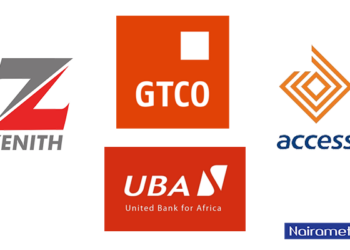UBA Nigeria Plc, one of Nigeria’s top banks released its 2017 half-year results indicating pre-tax profits rose 65% to N57.5 billion (2016 HY N42.3 billion). The bank also reported gross earnings of N386 billion, representing a 41% increase from the N273 billion reported a year earlier.
UBA’s latest results is line with what we have seen so far with the FUGAZ, a Nairametrics acronym for First Bank, UBA, GTB, Access Bank and Zenith Bank, Nigeria’s top 5 banks. The big banks are churning out numbers that seem to justify their current valuations.
A cursory look at the results reveals these important nuggets.
Top line Earnings
UBA’s blistering profits is mainly attributed to the 41% increase in gross earnings in the period under review. This was mainly due to its income from investing in treasury bills and FGN Bonds, a strategy most banks have used this year. Information from its annual report also reveal, out of the N153 billion reported in interest income, N53 billion was from income from treasury bills and bonds. Income from Treasury Bills alone was a whopping N30 billion up from N19 billion in 2016.
Just like Zenith Bank and GT Bank, UBA relied heavily on income from fixed income securities and forex to boost gross earnings. UBA however reported a N60 billion increase in its loans, compared to GTB, Access Bank and Zenith Bank which reported drops.
Restatement
In case you did not notice, UBA restated its 2016 earnings in compliance with an IFRS rule related to levies. A cursory look at the interim report shows UBA’s 2016 profit after tax was restated from N36.2 billion to N27.1 billion this year. A further check reveals the restatement was due to a change in the bank’s operating expenses to N41 billion to N36.1 billion to N41 billion.
We dug further and realised that the specific cost included in the operating expenses that resulted in the restatement was its banking resolution cost (AMCON cost), which was restated to about N11 billion from N5.5 billion. The bank explained the reason for the restatement as follows;
Banking sector resolution cost (the cost) was recognized in full during the period ended 30 June 2017 in line with IFRIC 21 (Levies) which clarifies that an entity should recognise a liability for a levy when the activity that triggers payment as identified by the relevant legislation (AMCON Act) occurs. The cost was previously spread throughout the financial year on a straight line basis, the
comparative cost has been restated to align with the current period’s presentation as follows:
In other words, rather than capture these cost within the period that they are due, UBA was spreading it over the whole year. This however is a purely accounting term and will not significantly affect the overall result when annualized. Nevertheless it does give the slightly hazy impression that UBA’s half-year result was significantly higher than last year.
Dividend – Coincedences
Is it a coincidence that on this day (August 25th) last year, UBA also announced dividends? Well, yest it is. Another coincidence is that UBA declared an interim dividend of 20 kobo per share this year, was the same amount declared last year. However, the share price was just above N4 then compared to N9.7 today. As expected the market did not reach to this dividend announcements as share price closed relatively flat.
What next for share price
At this juncture, we do not see the bank’s fundamentals having any significant effect on the trajectory of its share price, at least until the end of its third quarter. How its share price performs from here on will depend on how much more foreign investors are willing to value Nigerian banks and if demand for the stock can be created by its majority shareholders. Its Chairman, Tony Elumelu has not changed his shareholding in the company for about a year now, so we do not expect any significant changes any time soon.
UBA is a hold on the back of this view.



















